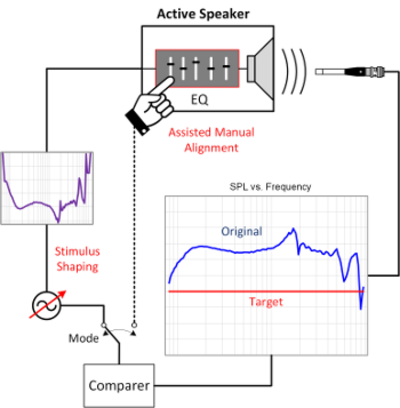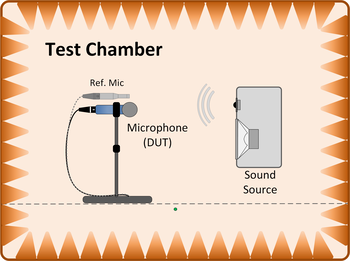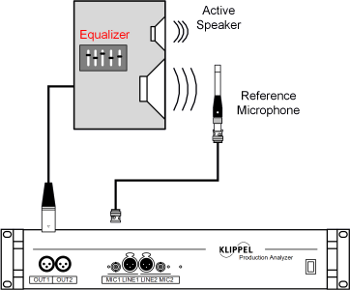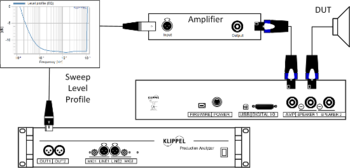Equalization & Alignment (EQA)
Optional Module for the KLIPPEL QC Framework
- Align frequency response
- Adjust sensitivity
- Assisted manual tuning
- Optimal EQ filter settings
- Microphone testing
- System equalization
The QC Equalization + Alignment is a versatile tool for adjusting the level or frequency response of transducers, audio systems or electronics. Stimulus shaping is applied to automatically achieve a user defined target response. The resulting level profile may be used for applications like microphone testing with equalized sound sources. In manual mode, the operator is assisted in adjusting external controls like gain or EQ filters with minimal time and learning effort.
Specification
Requirements
Hardware
- KLIPPEL Analyzer 3 (KA3) or
- Production Analyzer (PA) or
- 3rd party audio interface (sound card)
License Dongle (USB)
PC
Software
- QC Standard Software or
- QC Stand-alone Software or
- R&D Software 210 or higher
Accessories
- Microphones (optional)
- Power amplifier
- KA3 Amplifier Card or
- KA3 QC Card or
- 3rd party amplifier
Demo Video
Applications
Microphone Testing
Different approaches are available for testing quality of microphones such as vocal and measurement microphones or built-in microphones in headsets or smart devices. Using a reference sound source , a controlled test environment (test enclosure) and a reference microphone, the DUT’s response can be tested relative to the reference mic (difference) using the insertion method. Alternatively, the sound source can be calibrated in order to achieve a defined frequency response at the test position using the EQA.
As an alternative to a test chamber, a small acoustic coupler may be used for suitable microphones using the same test strategy but allowing higher sound pressure levels. In addition to the fundamental frequency response, the harmonic and impulsive distortion can be are tested against limits to derive a PASS/FAIL verdict.
Adjusting Factory EQ of Active Speakers
Many active audio systems like studio monitors provide a factory equalizer to fine-tune the frequency response and level at the end of the production line. The EQA is a valuable tool to assist the operator in adjusting these controls. In Manual mode, the measurement is repeated until the target response is achieved within specified tolerance. Assisted mode takes it to a more advanced level by giving instructions to optimally adjust the controls within shortest time, even with untrained operators.
Amplifier Roll-Off Compensation
Typical audio amplifiers suffer from a high-pass characteristic at very low frequencies, resulting in gain decay. The EQA may be used to determine and compensate this characteristic. Through this, consistent excitation of the DUT can be assured within the complete tested frequency range.
Standards
International Electrotechnical Commission
IEC 60268-7
Audio Engineering Society
AES X223




